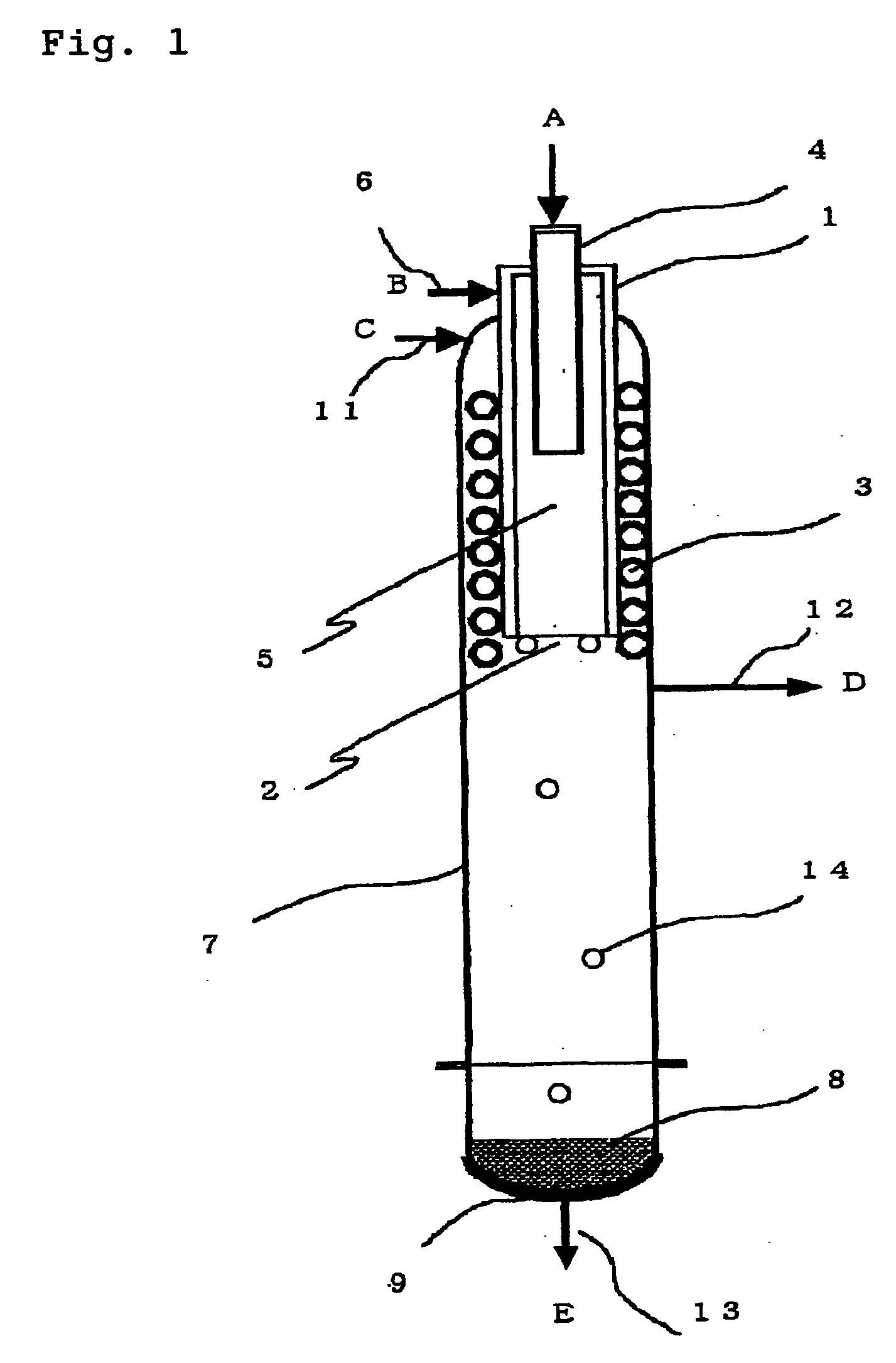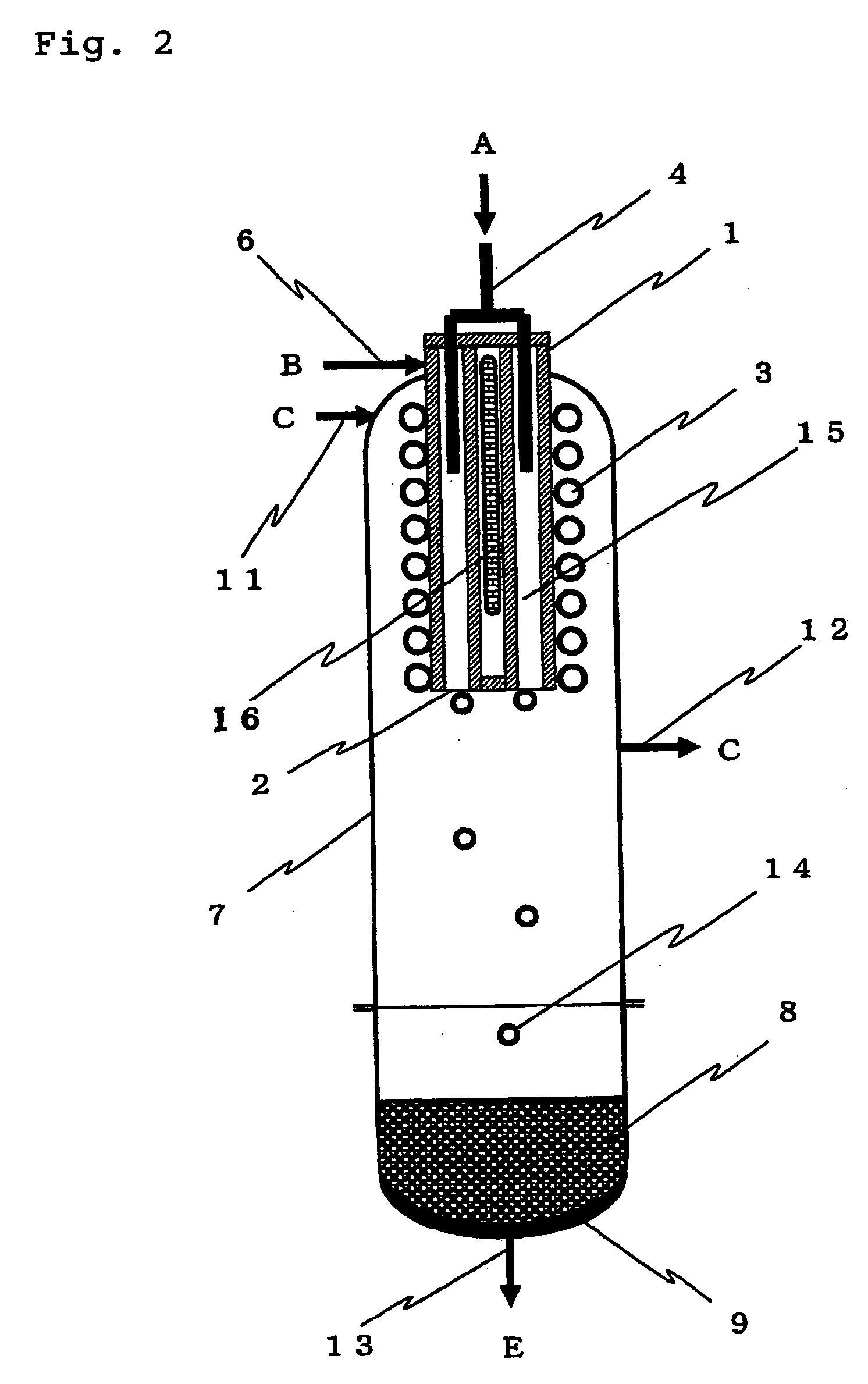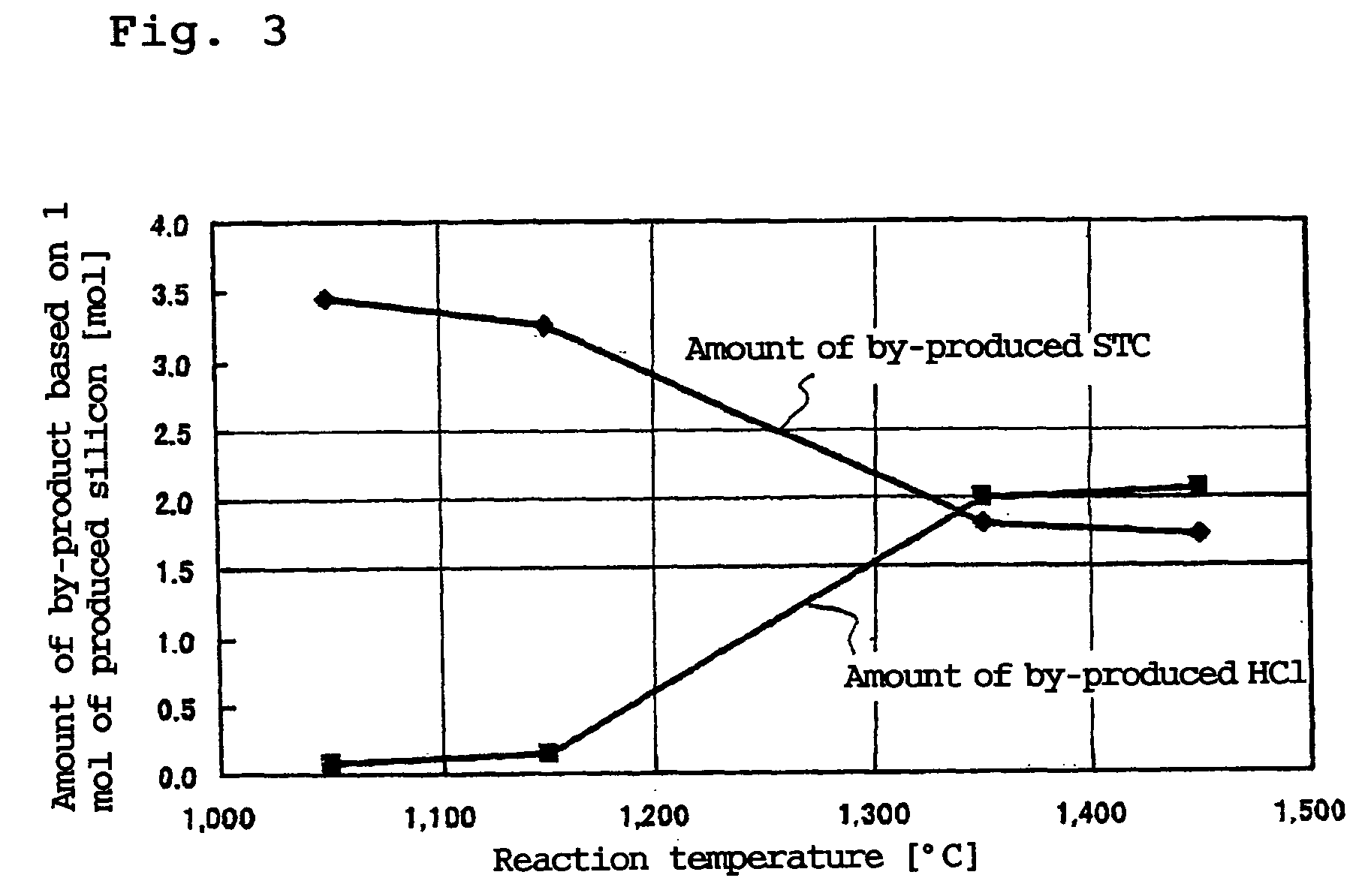Method for producing silicon
a technology of silicon and deposition reaction, applied in the direction of silicon compounds, crystal growth process, polycrystalline material growth, etc., can solve the problems of reducing the efficiency affecting the consumption of stc in the stc treating system, and the rate of the silicon deposition reaction becomes lower, so as to achieve easy control
- Summary
- Abstract
- Description
- Claims
- Application Information
AI Technical Summary
Benefits of technology
Problems solved by technology
Method used
Image
Examples
example 1
[0088] Silicon was produced in accordance with the process shown in FIG. 4 as follows.
[0089] In the deposition step 101, the apparatus (deposition surface area of about 400 cm.sup.2) shown in FIG. 1 was used to supply TCS and hydrogen in a hydrogen / TCS molar ratio shown in Table 1 and heat the inner wall of the cylindrical vessel 1 at 1,450.degree. C. so as to form silicon. TCS was mixed with part of hydrogen and supplied from the chlorosilane feed pipe 4 and the remaining hydrogen gas was supplied from the seal gas feed pipe 6 as a seal gas to ensure that the total amount of hydrogen should be as shown in Table 1. A small amount of hydrogen was supplied from the seal gas feed pipe 11 as a seal gas. The reaction pressure was 50 kPaG.
[0090] Table 1 shows the amount of the deposited silicon, the amount of the formed STC and the amount of the formed hydrogen chloride in the silicon deposition step. The amounts of the formed STC and hydrogen chloride were calculated by analyzing the exh...
examples 2 and 3
[0103] Silicon was produced in the same manner as in Example 1 except that the molar ratio of hydrogen to TCS was changed as shown in Table 1 in the silicon deposition step 101.
[0104] The amounts of the formed products in each step are shown in Tables 1 to 3 in the same manner as in Example 1. It is understood that an economical closed system can be constructed like Example 1.
example 4
[0105] 15.6 kg / H of surplus STC could be formed as shown in Table 3 by changing the molar ratio of hydrogen to TCS in Example 1 to 5 in the silicon deposition step 101. This was calculated to be 14.9 kg of surplus STC based on 1 kg of the produced silicon. Thus, the same amount of STC as surplus STC obtained by the Siemens process to be described hereinafter could be obtained.
PUM
| Property | Measurement | Unit |
|---|---|---|
| temperature | aaaaa | aaaaa |
| molar ratio | aaaaa | aaaaa |
| temperature | aaaaa | aaaaa |
Abstract
Description
Claims
Application Information
 Login to View More
Login to View More - R&D
- Intellectual Property
- Life Sciences
- Materials
- Tech Scout
- Unparalleled Data Quality
- Higher Quality Content
- 60% Fewer Hallucinations
Browse by: Latest US Patents, China's latest patents, Technical Efficacy Thesaurus, Application Domain, Technology Topic, Popular Technical Reports.
© 2025 PatSnap. All rights reserved.Legal|Privacy policy|Modern Slavery Act Transparency Statement|Sitemap|About US| Contact US: help@patsnap.com



